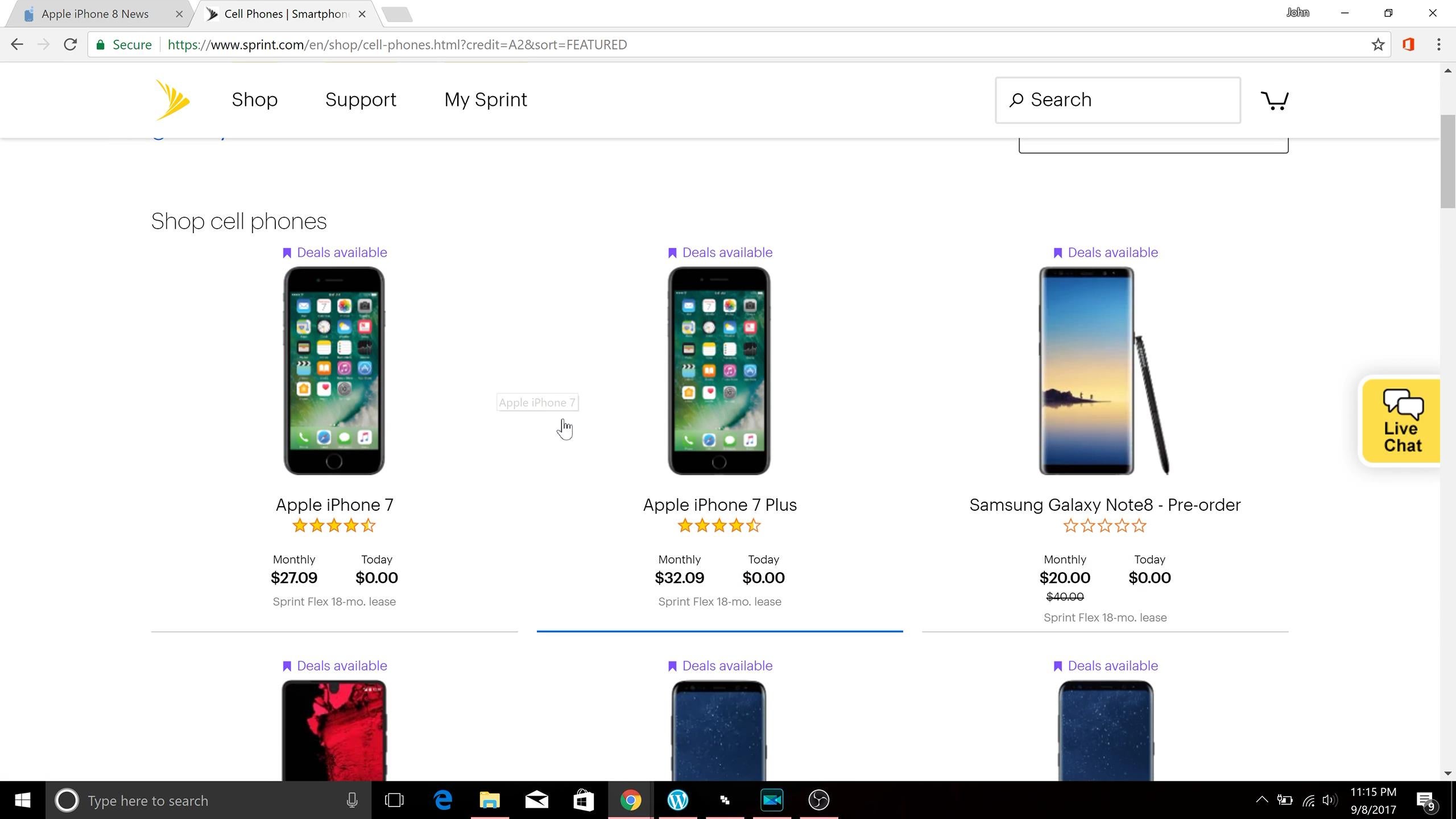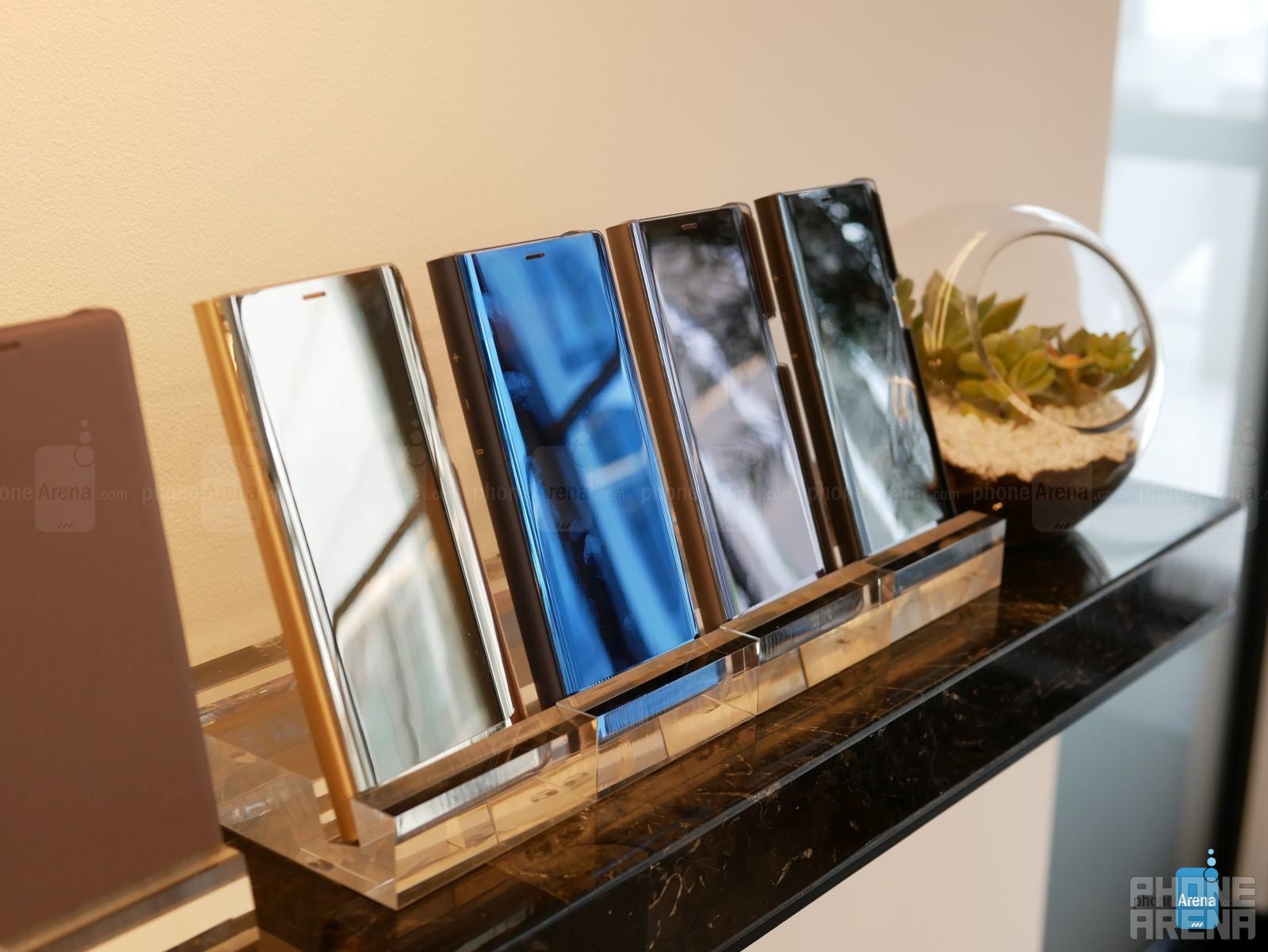It's nuts to buy phones around the $1,000 range, right?
This article may contain personal views and opinion from the author.

When I first started in the industry, the original iPhone came out of left field to surprise everyone with its revolutionary features. Even crazier to think about now, the iPhone bucked the trend by selling at a then insane price of $499 for the 4GB model – and an even more $599 cost for the 8GB one. Those prices were unprecedented to say the least, but the iPhone series eventually adopted the typical price structure of $200 on-contract, which was in line to its competitors.
As we approach the upcoming holiday season, something intriguing dawned upon me. With the introduction of the LG V30 during IFA 2017 and the Samsung Galaxy Note 8 shortly before that, we're beginning to see yet another trend unfold in the smartphone sphere when it comes to pricing. Prices will continue to increase, that's just the reality of things, but we're now seeing a significant gap amongst high-end devices.
There was a time when $600 was regarded as the threshold for most flagships, and for a long time that has been the case, but this year's crop of high-end smartphones being launched in time for the holiday season are taking things to a totally new level. For the Samsung Galaxy Note 8, prices for it start at a wallet-crunching $930 – while the LG V30 is currently reported to be on track at around $750 starting. And don't even get me started about the rumors circling the "iPhone 8" or "iPhone X."
All of this brings me to question why it's nut to buy phones around the $1,000 range. I used to think that forking over $600 was crazy, but that's hardly the case anymore
I'm not sure about you, but I'm still conditioned to the idea of on-contract pricing, which is probably why it's tough for me to wrap my head around the idea about paying outright for a phone. Flagships in the past, including the iPhones, Samsung Galaxies, and everyone else, were typically priced at $200 on-contract – or for those inclined to go the no-contract route, it was usually $600.
For a good while there, most of us were comfortable paying $200 at the store to pick up any one of the flagships being touted at the time. That's obviously still cheaper than having to pay $600 out-of-pocket, but it meant being locked into a contract period of 2-years. Breaking off from that contract would incur significant penalties, usually resulting in early termination fees that eventually covered the full retail cost of the phone.
As we've witness the shift in carrier strategies in the last couple of years, they slowly adopted this new form of "financing" or leasing devices – resulting in the death of on-contract prices. This move is undeniably the single biggest thing that has changed consumer perception when it comes to smartphone prices. Instead of having to throw down $200 to pick up your favorite flagship with a contract, carriers now revert to telling them that there's nothing owed today, which is true, but there's more to it than just that.
Like seriously, I don't think I'd be against someone telling me that there's no payment necessary when buying a flagship phone at a store. Paying nothing and getting a sweet new phone? That sounds fantabulastic to me! But come on, you know there's more to it than just that, right? Don't be too gullible now!
How about that $756 full-priced phone? Well, that breaks down to $31.50 per month over a period of 24 months. Needless to say, that's not too shabby, still better than going to the store and shelling out $756 from your wallet. The beauty about this strategy is that it really minimizes the shock value, so rather than being turned off by the insane prices, our fears are alleviated because it's not something that's greatly impacting our finances at that exact moment.
All of this brings me to question why it's nut to buy phones around the $1,000 range. I used to think that forking over $600 was crazy, but that's hardly the case anymore
The death of on-contract pricing
I'm not sure about you, but I'm still conditioned to the idea of on-contract pricing, which is probably why it's tough for me to wrap my head around the idea about paying outright for a phone. Flagships in the past, including the iPhones, Samsung Galaxies, and everyone else, were typically priced at $200 on-contract – or for those inclined to go the no-contract route, it was usually $600.
For a good while there, most of us were comfortable paying $200 at the store to pick up any one of the flagships being touted at the time.
Finance/leasing prices ease the burden
Like seriously, I don't think I'd be against someone telling me that there's no payment necessary when buying a flagship phone at a store. Paying nothing and getting a sweet new phone? That sounds fantabulastic to me! But come on, you know there's more to it than just that, right? Don't be too gullible now!
Several factors come into play when it comes to financing or leasing a phone nowadays. For starters, we're no longer dealing with crazy amounts like $200, $400, or even $600. Instead, a flagship that normally costs $650 is now broken down to monthly payments over a 24-month period. That equates to $27.08, which is a substantially easier figure to swallow than $650.
How about that $756 full-priced phone? Well, that breaks down to $31.50 per month over a period of 24 months. Needless to say, that's not too shabby, still better than going to the store and shelling out $756 from your wallet. The beauty about this strategy is that it really minimizes the shock value, so rather than being turned off by the insane prices, our fears are alleviated because it's not something that's greatly impacting our finances at that exact moment.

Carriers adopted financing/leasing structures in the last few years, which seemingly eliminated 'on-contract' pricing.
Bring on the ultra-premium phones
So yeah, this bring me back to my original argument about how it's nuts to buy phones around the $1,000 range. It's actually not that crazy as long as carriers and the companies continue to offer deals with these leasing arrangements. For example, Sprint is easing the burden of having to pay off that $960 cost of the Samsung Galaxy Note 8 because of its Sprint Flex lease option. You're basically paying $20/month for the phone itself for 12 months, with the option of upgrading to a new phone after that period – albeit, if you choose not to upgrade, you'll have to pay the leftover balance of the phone.
Smartphones hovering in this new threshold are more than just your flagship class, since they tend to have more features and premium designs. Just look at the Galaxy Note 8, which clearly as some new goodies in tow that attempts to justify its worth. From the S-Pen, to its slightly beefier specs, and software features, the $960 cost of Sprint's version seems to be warranted over the $850-priced Samsung Galaxy S8+.

The Samsung Galaxy Note 8, priced at $930 starting, is one of the first phones this season to test how much consumers are willing to spend on smartphones.
Is it really nuts to buy them still?
For the longest time ever, it was the norm for me to shell out $200 every couple of years to upgrade my phone. You'd get a flagship level smartphone, but without having to pay that full price of $650. And now that we're approaching that $1,000 threshold, you'd think that people are nuts to even fathom buying them. However, as I've detailed above about how financing/leasing options ease the burden, it's not quite as crazy for people to tinker the idea of buying phones in this new price range.
Honestly, it's still a scary thought for me, just because I know that I'm still going to end up paying for that full amount one way or another. There are reasons why devices like the Samsung Galaxy S8, LG G6, iPhone 7, and others in that $650 to $750 continue to thrive and dominate the sales chart. But for these new breed of ultra-premium smartphones, they’re not meant to compete against their flagship brethren – they're here to complement them.
Is it really crazy for people to buy phones at these prices? Not really anymore. What's crazy, though, is thinking about what's next. Limited editions would probably be a good start.
Follow us on Google News








![A new Android bug is making it impossible to install new apps. Are you affected? [UPDATE]](https://m-cdn.phonearena.com/images/article/176703-wide-two_350/A-new-Android-bug-is-making-it-impossible-to-install-new-apps.-Are-you-affected-UPDATE.webp)

Things that are NOT allowed:
To help keep our community safe and free from spam, we apply temporary limits to newly created accounts: